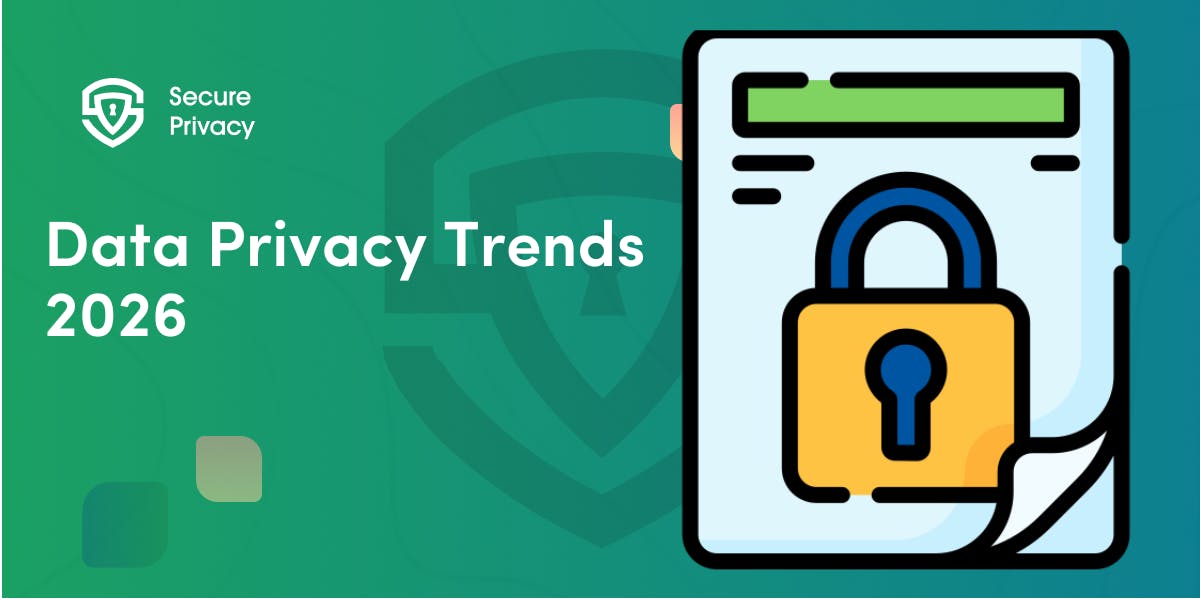Dark Pattern Compliance: How to Stop Manipulative Cookie Banners
You visit a website and see a cookie banner with a bright green "Accept All" button next to a tiny gray "Manage Preferences" link buried in small text. There's a countdown timer saying "Customize settings expires in 10 seconds!" and several boxes are already checked for you. This isn't just bad design: it's a "dark pattern," a manipulative interface deliberately designed to trick you into giving up your privacy.
Dark patterns in cookie consent have become a major target for regulators worldwide. These deceptive designs manipulate users into accepting tracking cookies while making it difficult to opt out. The consequences for companies using these tactics are getting more severe, with fines reaching tens of millions of dollars and growing regulatory scrutiny across Europe and the United States.
Consent Management Platforms now face pressure to detect and eliminate these manipulative practices to ensure compliance with laws like GDPR and the Digital Services Act going into 2026. Understanding how to identify and prevent dark patterns has become essential for any organization serious about ethical privacy compliance and avoiding costly regulatory penalties.
What Are Dark Patterns in Cookie Consent?
Dark patterns represent intentional design choices that manipulate users into making decisions they wouldn't normally make if presented with clear, honest options.
Common Types of Manipulative Cookie Banner Designs
Pre-ticked boxes automatically opt users into non-essential cookies before they've made any conscious choice. This practice directly violates GDPR Article 7, which requires explicit consent rather than assumed agreement. When users see boxes already checked, many assume this represents the recommended or required setting rather than understanding they can uncheck these options.
Asymmetric design deliberately makes "Accept All" buttons more prominent while hiding "Reject" options in smaller text, different colors, or multiple menu layers. This violates GDPR's requirement that consent be "freely given" because the visual design steers users toward accepting tracking rather than providing genuine choice between equivalent options.
False urgency tactics use countdown timers or warning messages that pressure users to make quick decisions about their privacy. These timers create artificial scarcity and anxiety, preventing users from taking time to understand their choices or access detailed preference settings.
Interface overloading buries granular consent controls under multiple layers of menus, making it practically impossible for users to customize their privacy settings. While these systems technically provide user control, the complexity effectively coerces users toward accepting default settings rather than navigating complicated preference interfaces.
How Regulators Define and Categorize Dark Patterns
The European Data Protection Board categorizes these manipulative tactics as "overloading," "skipping," or "stirring"—all of which undermine valid consent by making it difficult for users to make informed decisions. These categories help regulators and companies identify specific types of manipulation that violate privacy principles.
"Overloading" involves presenting users with so much information or so many choices that they become overwhelmed and accept default settings. "Skipping" refers to designs that make it difficult to access certain options or bypass steps in the consent process. "Stirring" includes emotional manipulation through language, visual design, or time pressure that influences user decisions.
These regulatory frameworks provide concrete guidance for evaluating whether consent interfaces meet legal standards, moving beyond general principles to specific design criteria that can be measured and enforced.
Regulatory Requirements and Enforcement
Multiple regulatory frameworks now address dark patterns in cookie consent, creating overlapping compliance obligations for organizations operating globally.
GDPR Compliance Standards
While GDPR doesn't explicitly mention dark patterns, it establishes clear requirements for valid consent that dark patterns violate. Consent must be freely given without imbalance of power, meaning rejection must be as easy as acceptance. Informed consent requires clear disclosure of data uses and third-party sharing without manipulation or misdirection.
Unambiguous consent prohibits pre-ticked boxes or implied consent through continued browsing. The EDPB's 2023 guidelines explicitly state that dark patterns violate these fundamental principles by manipulating user decision-making processes rather than enabling genuine choice.
These standards create measurable criteria for evaluating consent interfaces. Organizations can audit their cookie banners against specific requirements like equal button sizing, clear language, and accessible preference controls to ensure compliance with GDPR consent principles.
Digital Services Act Requirements
The Digital Services Act prohibits dark patterns that "impair users' ability to make autonomous decisions" under Article 25. However, it defers to GDPR for data-related violations, creating some enforcement gaps where different regulations might apply to the same manipulative practices.
The DSA focuses on platform accountability and user empowerment, requiring large platforms to implement systems that detect and prevent dark patterns. This creates additional obligations for consent management platforms serving major websites and applications.
The interaction between DSA and GDPR requirements means organizations must consider both general digital fairness principles and specific data protection standards when designing consent interfaces.
FTC Enforcement in the United States
The FTC's 2024 report highlights "disguised ads" and "subscription traps" as illegal dark patterns, with fines up to $50 million for non-compliance. While focused on commercial practices rather than data privacy specifically, these enforcement actions demonstrate growing regulatory attention to manipulative interface design.
FTC enforcement creates additional compliance considerations for companies operating in both US and European markets, requiring consent systems that meet standards across multiple regulatory frameworks simultaneously.
The global trend toward dark pattern regulation means that organizations can no longer treat manipulative design as a regional compliance issue but must implement ethical interfaces that meet the highest standards across all jurisdictions.
How CMPs Detect and Prevent Dark Patterns
Modern Consent Management Platforms use sophisticated technology and design standards to identify and eliminate manipulative practices.
Automated Detection and Auditing Systems
UI scanners automatically flag problematic design elements like asymmetric button colors, hidden reject options, or pre-ticked boxes. These automated systems can process thousands of consent interfaces quickly to identify potential violations before they're deployed to users.
Language analysis using natural language processing models detects coercive phrasing such as "Enhance your experience" or "Protect your privacy" that subtly manipulates user decisions. These systems can identify emotional manipulation and biased language that steers users toward particular choices.
Flow mapping ensures that granular consent controls are accessible within two clicks and that rejection pathways are as simple as acceptance processes. This technical auditing helps identify cases where compliance appears adequate on the surface but practical usage reveals manipulative friction.
Real-time monitoring capabilities enable continuous compliance checking rather than one-time audits, ensuring that consent interfaces maintain ethical standards even as websites and applications evolve over time.
Compliance Dashboard and Reporting Tools
Advanced CMPs provide real-time alerts that notify administrators when banners fail GDPR or DSA compliance checks. These automated notifications enable quick correction of problematic designs before they result in regulatory violations or user complaints.
A/B testing capabilities allow organizations to compare consent rates between compliant and non-compliant designs, helping identify when manipulation artificially inflates acceptance rates. This data helps organizations understand the business impact of ethical design while maintaining compliance.
Comprehensive reporting tools document compliance efforts and design decisions, providing evidence for regulatory examinations while supporting ongoing optimization of consent interfaces based on user behavior and compliance requirements.
Third-Party Integration and Standards Compliance
Integration with IAB TCF 2.2 enforces standardized consent categories to prevent ambiguous data uses and ensure consistent consent collection across different advertising partners and data processors.
Google Consent Mode v2 integration blocks analytics tags when users reject cookies, preventing "implied consent" loopholes where data collection continues despite user rejection. This technical integration ensures that consent decisions actually control data processing rather than just affecting banner display.
Industry standard compliance helps organizations maintain consistent ethical practices across different technology partners while providing interoperability between various consent management and data processing systems.
Real-World Case Studies and Enforcement Actions
Recent regulatory actions and research studies reveal the widespread nature of dark pattern violations and their consequences.
European Research Findings
A 2024 study by Austrian privacy groups examining 10,000 EU websites found that 56% used pre-ticked boxes for non-essential cookies while 72% hid reject buttons behind multiple menus. These findings demonstrate that dark patterns remain widespread despite clear regulatory guidance.
Major CMPs including OneTrust and Cookiebot were implicated in enabling these manipulative designs, highlighting that even established privacy technology providers must continuously audit their systems for compliance with evolving standards.
The research revealed that dark patterns often result from default CMP configurations rather than deliberate manipulation by individual websites, suggesting that technology providers bear significant responsibility for promoting ethical design practices.
High-Profile Enforcement Actions
Amazon faced a $30 million fine from the FTC for using countdown timers in Prime cancellation flows—a tactic also commonly used in cookie banners. This enforcement action demonstrates that manipulative design techniques face serious regulatory consequences regardless of the specific context.
European privacy authorities have increasingly focused on dark pattern enforcement, with multiple organizations receiving significant fines for consent banner violations that manipulate user decision-making processes.
These enforcement actions establish clear precedents that manipulative design carries serious financial and reputational risks, encouraging organizations to prioritize ethical interface design over short-term conversion optimization.
Compliance Strategies and Best Practices
Organizations must implement comprehensive strategies that address both technical compliance and ethical design principles.
Ethical Design Standards and Implementation
Equal prominence requirements mean that "Accept" and "Reject" buttons must match in size, color, and visual weight. This prevents subtle manipulation through visual hierarchy that steers users toward particular choices without explicit influence.
One-click reject functionality ensures that users can decline all non-essential tracking without navigating through complex preference centers or multi-step processes. This requirement addresses manipulation through procedural friction that makes rejection artificially difficult.
Language neutrality avoids phrases that imply risk or benefit associated with particular choices. Terms like "Protect your privacy" for rejection buttons or "Enhance your experience" for acceptance create emotional manipulation that influences user decisions beyond factual information.
Clear information hierarchy presents essential information prominently while ensuring that detailed options remain accessible without overwhelming users. This balance enables informed decision-making without the cognitive overload that often leads to default acceptance.
Transparency and User Empowerment Tools
Comprehensive vendor lists display all third-party trackers and data processors before consent collection, enabling users to understand the full scope of data sharing associated with their choices. This transparency supports genuinely informed consent rather than vague descriptions of data processing.
Just-in-time explanations provide contextual information about technical terms like "legitimate interest" or "data processing purposes" without overwhelming users with legal jargon. These tools help bridge the gap between regulatory requirements and user understanding.
Progressive disclosure techniques present information in layered formats that allow users to access as much detail as they want without forcing everyone through complex interfaces. This approach accommodates different user preferences and technical literacy levels.
Regular transparency reporting documents consent interface performance, user behavior patterns, and compliance metrics to demonstrate ongoing commitment to ethical design and regulatory compliance.
Technology Integration and Future-Proofing
Advanced logging systems create detailed records of consent decisions and interface interactions to support regulatory examinations and ongoing compliance monitoring. These systems must balance transparency requirements with privacy protection for user interaction data.
Integration with emerging privacy technologies like Privacy Sandbox and Topics API ensures that consent systems remain compatible with evolving advertising and analytics technologies while maintaining user control over data processing.
Regulatory update automation helps consent systems adapt to changing legal requirements across multiple jurisdictions without requiring manual configuration updates for every regulatory change.
International standards compliance ensures that consent interfaces meet requirements across different regulatory frameworks while maintaining consistent user experiences regardless of geographic location.
Future Developments and Regulatory Trends
The regulatory landscape around dark patterns continues evolving with new enforcement mechanisms and technological solutions.
Emerging Regulatory Frameworks
The proposed Digital Fairness Act for 2025 aims to harmonize EU dark pattern prohibitions across GDPR, DSA, and AI Act requirements. This comprehensive approach would create unified standards for manipulative design across different technology contexts.
AI-powered enforcement initiatives plan to deploy machine learning models to scan millions of websites for dark patterns by 2026. This automated enforcement could dramatically increase the detection and prosecution of manipulative design practices.
Global regulatory alignment continues as Brazil's LGPD and California's CPRA adopt GDPR-style consent requirements, pushing CMPs toward standardized compliance approaches that work across multiple jurisdictions simultaneously.
Technology Evolution and Standards
Quantum-resistant logging using algorithms like CRYSTALS-Dilithium will secure consent records against future technological threats while maintaining long-term audit capabilities for regulatory compliance.
Enhanced AI detection capabilities will enable more sophisticated identification of subtle manipulation techniques that current automated systems might miss, including psychological manipulation through color choice, typography, and interface timing.
Industry standardization efforts continue developing common frameworks for ethical design assessment and compliance verification across different CMP providers and technology platforms.
Building Ethical Consent Management Systems
Dark patterns in cookie consent represent both ethical failures and legal violations that carry serious business consequences. Organizations must evolve beyond viewing consent management as a compliance checkbox toward treating user empowerment as a fundamental business value that drives long-term success.
The most successful consent management implementations combine automated detection technologies with ethical design principles and comprehensive compliance monitoring. These systems protect organizations from regulatory penalties while building user trust through transparent, respectful privacy practices.
Success requires recognizing that manipulative design creates short-term gains at the expense of long-term sustainability. Users increasingly recognize and resent dark patterns, while regulators impose growing penalties for these practices. Organizations that prioritize ethical consent management position themselves for sustained success in an increasingly privacy-conscious market.
As the European Data Protection Board warns, "A consent banner that manipulates is a banner that fails." This principle extends beyond regulatory compliance to encompass business sustainability, user relationships, and competitive positioning in markets where privacy protection becomes a key differentiator.
The future belongs to organizations that treat consent management as an opportunity to demonstrate respect for users rather than a burden to minimize. This approach creates sustainable competitive advantages while ensuring compliance with evolving regulatory requirements across global markets.
Frequently Asked Questions
What exactly makes a cookie banner a "dark pattern"?
A cookie banner becomes a dark pattern when it uses manipulative design to trick users into accepting tracking. This includes pre-checked boxes, making "Accept All" buttons much larger or more colorful than "Reject" options, using countdown timers to pressure quick decisions, or hiding granular controls behind multiple menu layers. The key is intent to manipulate rather than inform.
Are dark patterns actually illegal, or just unethical?
Dark patterns in cookie consent are illegal under GDPR because they violate requirements for freely given, informed consent. The Digital Services Act also prohibits designs that impair users' autonomous decision-making. Recent FTC enforcement shows US authorities are also treating manipulative interfaces as legal violations, with fines reaching $50 million.
How can I tell if my current cookie banner uses dark patterns?
Check if your "Accept" and "Reject" buttons are the same size and color, whether users can reject all non-essential cookies in one click, if any boxes are pre-checked, and whether you use urgent language or timers. If rejection is harder than acceptance, or if the design steers users toward accepting tracking, you likely have dark pattern issues.
What are the penalties for using dark patterns in cookie consent?
GDPR fines can reach 4% of global annual revenue or €20 million, whichever is higher. Recent enforcement actions show regulators taking dark patterns seriously, with Amazon facing $30 million in FTC fines for manipulative design. European privacy authorities are increasingly targeting cookie banner violations specifically.
Can consent management platforms automatically detect dark patterns?
Modern CMPs use AI-powered systems to scan for asymmetric button designs, pre-checked boxes, coercive language, and complex rejection flows. However, detection isn't perfect, and organizations should also conduct manual audits and user testing to identify subtle manipulation that automated systems might miss.
How do I fix dark patterns without hurting my consent rates?
Focus on building trust through transparency rather than manipulation. Clear, honest communication about data uses often performs better long-term than deceptive tactics. Consider that manipulated consent creates legal risks and user resentment that outweigh short-term conversion benefits. Ethical design builds sustainable user relationships.
Do dark pattern rules apply differently in different countries?
While specific regulations vary, the trend is toward similar standards globally. GDPR sets the strictest requirements, but US authorities and other jurisdictions are adopting similar principles. It's safest to design consent interfaces that meet the highest global standards rather than trying to optimize for different regional requirements.
Get Started For Free with the
#1 Cookie Consent Platform.
No credit card required

Privacy Governance for Small Businesses: Step-by-Step Guide
You're a 20-person company. A customer asks for their data. Your marketing team just added a new tracking pixel. Your CRM vendor updated their terms. And you just realized you might need to comply with GDPR, CCPA, or both.
- Legal & News
- Data Protection

Data Privacy Trends 2026: What Every Business Needs to Know
You're planning next year's compliance roadmap, but the rules keep changing. New regulations emerge monthly. Enforcement penalties double overnight. And now, AI governance lands on your desk alongside data privacy obligations.
- Legal & News
- Data Protection

How to Build a Privacy Governance Framework: Step-by-Step Guide
Privacy governance isn't about checking regulatory boxes — it's about building systematic capability to manage personal data responsibly across your entire organization. Whether you're facing GDPR obligations, preparing for CCPA enforcement, or establishing foundational privacy practices, a structured framework transforms compliance from reactive firefighting into proactive risk management.
- Legal & News
- Data Protection

